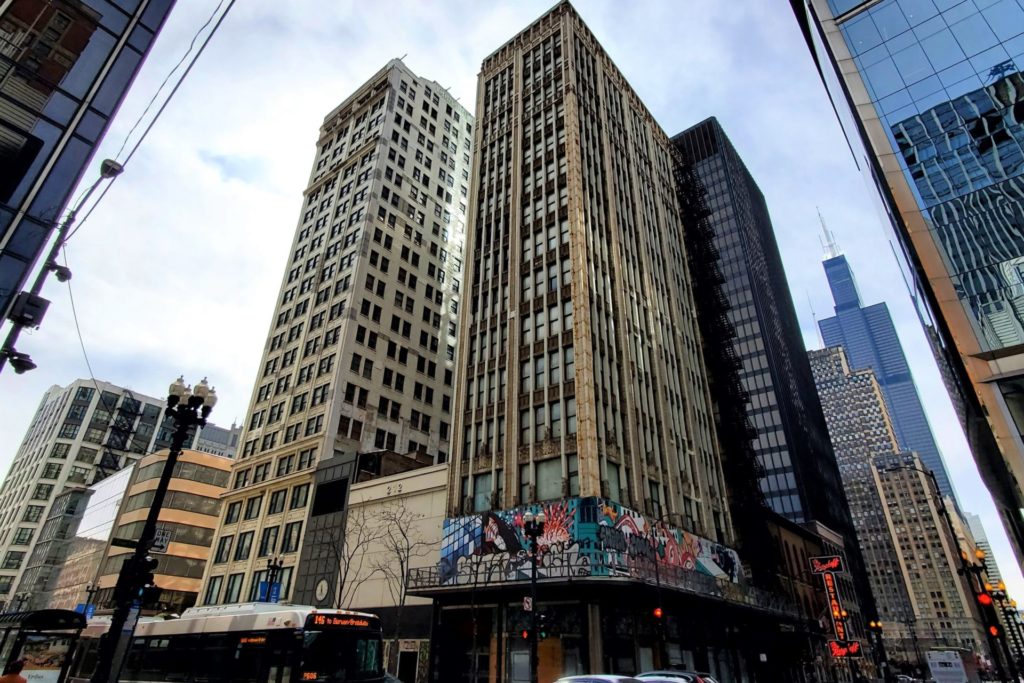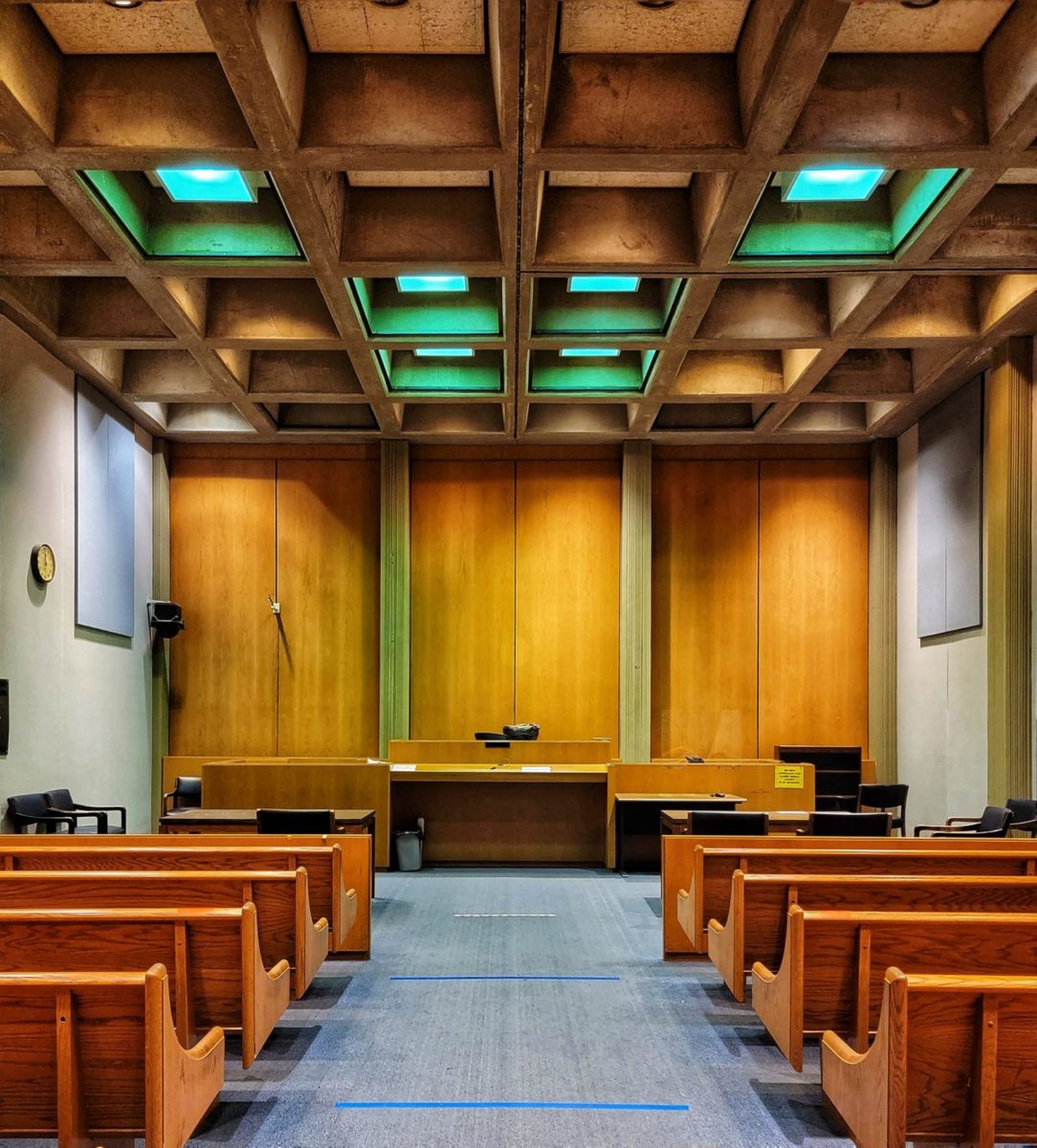(Inside the Will County Courthouse in Joliet, included on Landmarks Illinois’ 2022 Most Endangered Historic Places in Illinois.)
June 3, 2022
Guest article by Mike Jackson
(This article originally appeared in the May 2022 edition of The Arch)
Two sites on this year’s Most Endangered Historic Places in Illinois are not only important for their cultural heritage and architectural significance but their environmental value as well. The proposed demolition of the Will County Courthouse in Joliet and the Century and Consumers Buildings in Chicago’s Loop are both opportunities to confront climate change and promote environmental justice instead of sending buildings to landfills.
When deciding to demolish buildings, we must consider embodied energy – the total amount of energy consumed by the processes associated with the production of a new building, from extracting and processing raw materials, to assembling building components, to transporting construction materials, etc. In 2011, the National Trust for Historic Preservation released its report, “The Greenest Building: The Environmental Value of Building Reuse,” which provided statistics for the obvious — it takes decades before a new building can save enough operating energy to make up for the front-loaded CO2 emission of construction.

(The Century & Consumers Buildings in Chicago, included on Landmarks Illinois’ 2022 Most Endangered Historic Places in Illinois.)
After years of making the environmental case for saving old buildings, historic preservationists are no longer alone in calling for action. A consensus is emerging among architects, researchers, green building advocates and climate policymakers that building reuse is an effective way to decrease carbon emissions and do so right away when reductions are most important.
A recent article about climate change in The Guardian entitled, “The case for … never demolishing another building,” asked, “What if every existing building had to be preserved, adapted and reused, and new buildings could only use what materials were already available?” French architects Anne Lacaton and Jean-Philippe Vassal, the winners of the 2021 Pritzker Architecture Prize, are known for their motto, “Never demolish, never remove or replace, always add, transform, and reuse!” These are but two examples of environmental thought leaders who recognize the importance of building reuse as a climate change tool.
We still need more voices in this fight. The issue of climate change is one of the greatest challenges to mankind. We need environmental organizations to join the preservation community to take a stand against the demolition of our historic places. It’s time for everyone who cares about the future to recognize building reuse as an important tool in climate change policies.
Demolishing the Will County Courthouse and the Century and Consumers Buildings would be a waste of physical and capital resources. Additionally, in both cases, the decision is based upon programmatic and policy decision that shows a civilization at war with the future. Tearing down these two 2022 Most Endangered sites would be more than wasteful – their demolition would serve as glaring examples of what the future will recognize as a “climate crime scene.”
About the author
Mike Jackson, FAIA, is a preservation architect in Springfield and a member of the Landmarks Illinois Board of Directors. He formerly served as Deputy State Historic Preservation Officer (SHPO) in Illinois from 2009 to 2013 and was the Chief Architect for the Illinois SHPO from 1983 to 2013.

